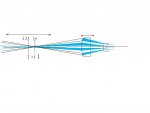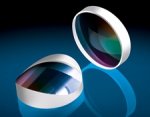- Joined
- Jul 10, 2015
- Messages
- 12,851
- Points
- 113
I watched the Monty Python clip, classic stuff, also like Mel Brooks and have you seen The IT Crowd ? Check it out on Netflix

Follow along with the video below to see how to install our site as a web app on your home screen.
Note: This feature may not be available in some browsers.



Quote Supercar CDBeamer777
"Just a guess as I have not yet made measurements......1.2 mRad...…...Combined Hexagonal beam combination...approx. 5mm"
Just an observation. Applicable to quality made lenses. It seems 12mm diameter lenses is one sweet spot for price. The other is 6mm diameter and I think 9mm. Diameters below and above that start going in price.I'm confused, a 5 mm combined hexagonal beam combination? What? 5 mm? How? The beams themselves are filling up the 6.3 mm diameter lens when at a 8 mm FL, aren't they? Or, is the threaded lens mount masking it down to 5 mm? I still don't understand what you mean by combined though.
1.2 mRad is very good, 1.5 a bit high for me. My thoughts are 1.2 mRad could only be possible with that beam diameter if the beam from the NDG7475 laser diode is so wide it completely fills the 8 mm lens diameter, perhaps with a slight amount of beam truncating. From what I am seeing, the way the box reflection from this diode is eliminated, it makes sense that is what is happening, that the limit of the tube size (and lens inside, of course) is masking that artifact, that the 8 mm focal length causes the output beam to either be right up against the tube size, or slightly larger with some of the beam being cut-off when using this diode with the typical 46 degrees (one side) of raw uncollimated divergence.
Without having made the measurements myself, this is all speculation, but I am wondering if I could be correct about this. If so, a 10 mm diameter lens would be a better fit, but even if I had some lenses that diameter, we don't have threaded lens mounts/holders let alone DTR modules for that size of lens tube.
That said, the masking effect isn't a bad thing for some of these diodes, maybe when considering that aspect the G8 is the perfect choice? You have a lot more expertise in this area than I do, I am grasshopper seeking guidance but this is how I see it master.
EDIT: I'm so anxious waiting for your reply regarding this design and what the divergence will really be as well as clarification on how close the beams will be, I'm checking several times a day! CDBEAM, CDBEAM, CDBEAM
That reply was directed specifically to you. We both prize a low divergence beam that looks thin over great distance over a thin beam at close range. Esco Optics has plano-convex acylindrical optics for $60.I'd be happier with a 12 mm aspherical or PCX lens over a 6 or 9 mm but that size is considered a fat beam, some of us care more about seeing a tiny thin high brilliance beam close in more than a low divergence beam.

Those type lenses are round rather than rectangular. Here's a photo for reference for those that are not familiar. What I like about this form is that it better fits tubular form of most handheld lasers.I found ten one inch Thorlabs aspherical lenses with a visible spectrum AR coating on them a few days ago for cheap on ebay
I wish I could find some big aspheric lenses larger than two inch diameter for use in a beam expander, but best I can find, larger high quality ones suitable for lasers are not common, too expensive. I've never seen a high quality AR coated laser aspherical lens larger than two inches, at least, not three inches and larger yet. From what I've found, for lasers, for less beam distortion the choice of lens type fall in this order:
1. Plano-Aspherical (best)
2. Plano-Convex
3. Bi-Convex.
"Since aspheric lenses do not introduce spherical aberration, they are commonly chosen when the collimated laser beam is to be between one and five millimeters." Source: https://www.thorlabs.com/tutorials.cfm?tabID=F7ED0DD5-3F31-4F84-9843-E0F7AC33F413
Re: Your mention of acylindrical lenses. They are the cylindrical counterpart to an aspheric lens, I have not used those for anything yet, but I have plenty of cylindrical lenses in my collection of goodies which are good for making lines, or, even to check to make sure a beam is fully collimated. From what I've found if a beam is fully collimated, the line made by a cylindrical lens is sharpest or thinnest at distance. Can anyone in the forum confirm that finding for me?


